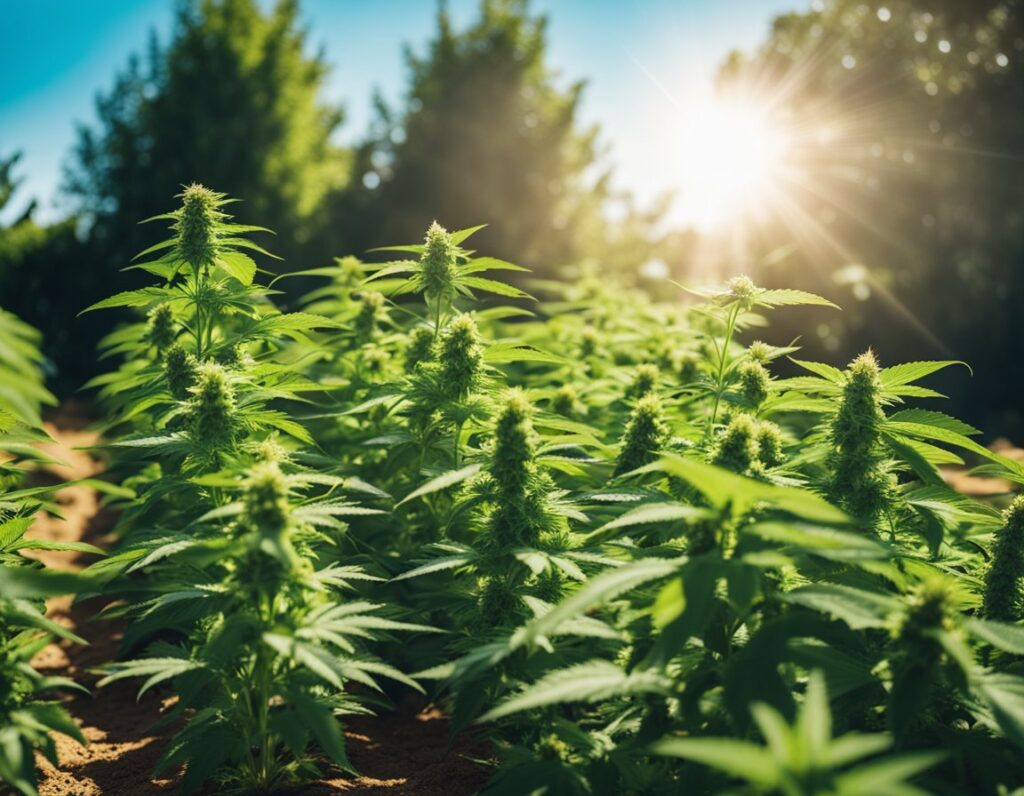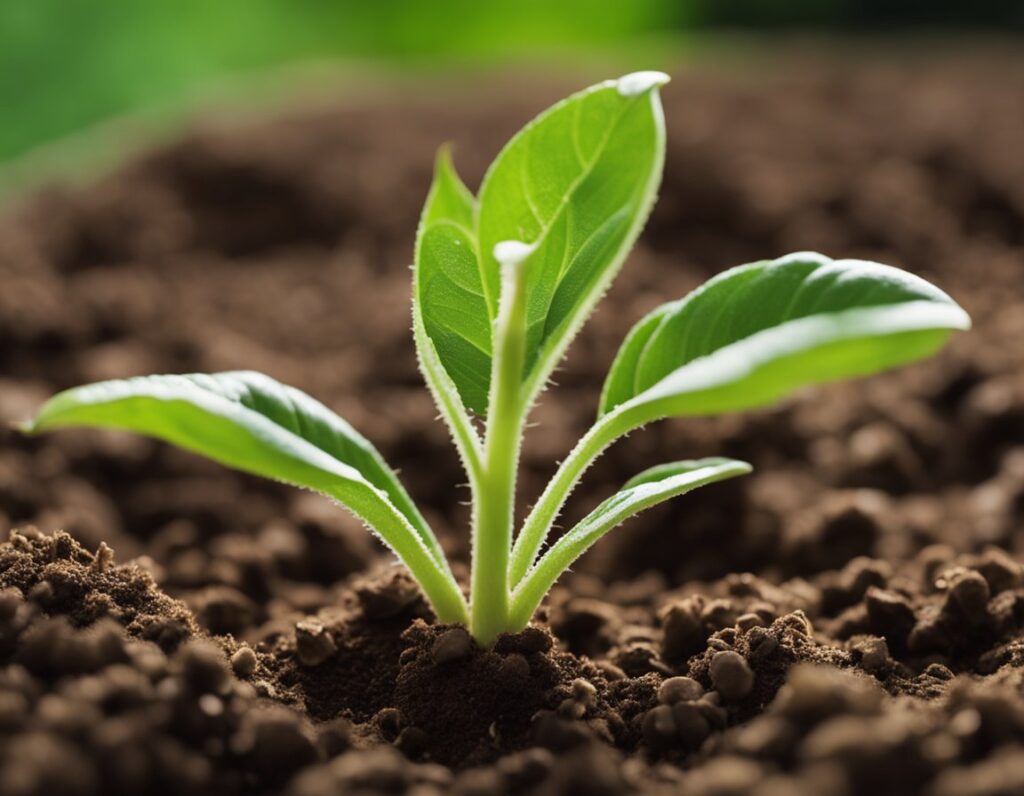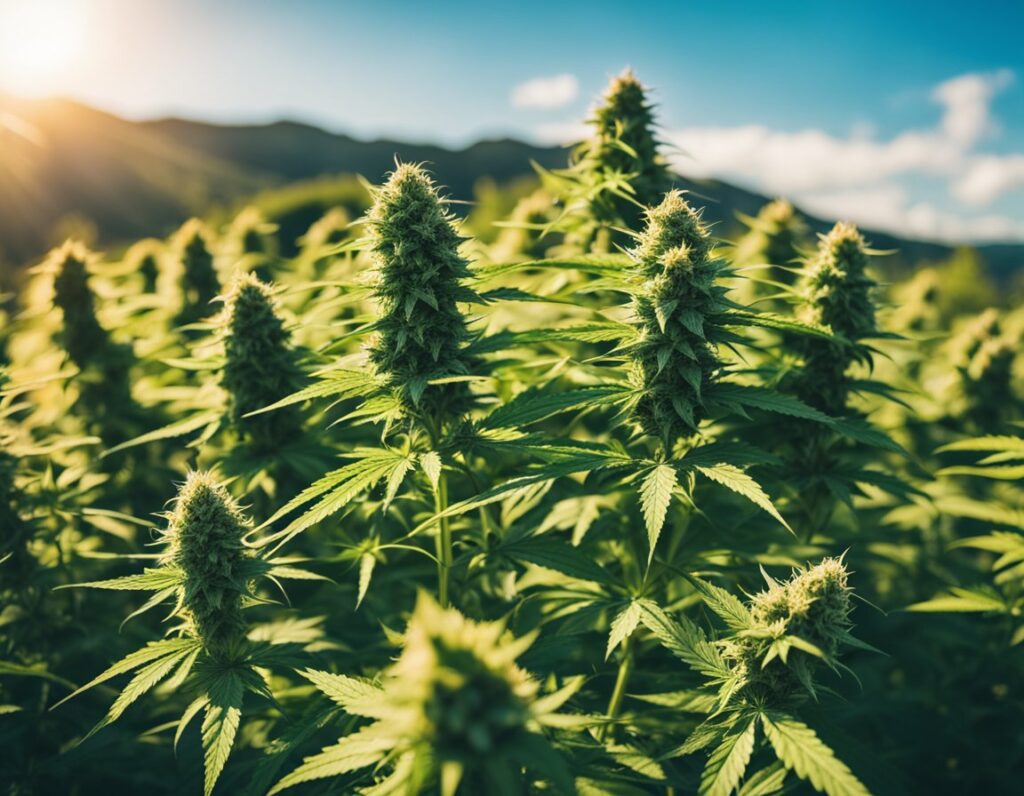
Cookies seeds are renowned for their distinct genetic makeup that combines various strains to yield unique flavors and effects. The following sections explore the genetic lineage and compare pivotal strains contributing to the identity of Cookie seeds.
Cookie seeds originate from a blend of several legendary cannabis strains. At the core, Girl Scout Cookies (GSC) combines the potent effects of OG Kush and Durban Poison. This mix creates a hybrid strain with a harmony of indica and sativa characteristics.
The careful breeding has allowed Cookies seeds to stand out in the cannabis industry. GSC is celebrated for its resilience and adaptability in various growing conditions. Through meticulous breeding practices, this strain maintains its iconic traits while introducing new flavors and effects to growers and users.
Girl Scout Cookies (GSC) gains its formidable genetics from OG Kush and Durban Poison. OG Kush is known for its strong indica-dominant properties, providing physically relaxing effects. In contrast, Durban Poison brings sativa elements, offering uplifting, energetic experiences.
The combination results in a balanced hybrid. GSC showcases dense, resinous buds with rich purple and orange hues. The effects are multifaceted, providing mental clarity alongside physical relaxation, making it appealing to a wide range of users. This balance highlights the sophisticated breeding efforts involved in creating Cookies seeds.

To successfully grow Cookies strains, you need to create specific conditions that address soil, temperature, humidity, and lighting needs. Both indoor and outdoor cultivation methods demand attention to detail for optimal growth.
When cultivating Cookies strains, it’s essential to use well-draining soil rich in organic matter. A loamy soil mix is particularly beneficial as it encourages root development and retains moisture without waterlogging.
You should incorporate nutrients like nitrogen, phosphorus, and potassium in balanced quantities. During the vegetative stage, higher nitrogen levels support growth. As the plant transitions to flowering, increase phosphorus and potassium to promote bud development. Regularly test the soil’s pH to maintain a slightly acidic level, ideally between 6.0 and 6.8, to enable nutrient uptake.
Maintaining the right temperature and humidity is crucial. Daytime temperatures should ideally range from 68°F to 77°F (20°C to 25°C). During the night, slightly cooler temperatures are beneficial but should not dip below 60°F (15°C).
Humidity levels should vary with growth stages: higher humidity (around 70%) is suitable for young plants, while flowering plants thrive at a reduced 40% to 50% to prevent mildew.
In indoor settings, ventilation systems, including exhaust fans and oscillating fans, play a vital role in controlling these conditions, simulating outdoor breezes and preventing mold.
For indoor cultivation, consistent light is key. Cookies strains benefit from an 18-6 light cycle during the vegetative phase and a 12-12 light cycle for flowering.
Using LED grow lights is preferable due to their energy efficiency and ability to provide the full spectrum of light. Position lights to cover the entire canopy while maintaining a safe distance from plants to prevent heat stress. Light intensity should be sufficient to simulate sunny conditions, which is crucial for robust growth.
Remember to monitor and adjust light settings as plants develop to maintain optimal growing conditions.

From germination to harvest, growing Cookies seeds requires understanding each stage of the plant’s lifecycle. Key aspects like germination techniques, vegetative and flowering stages, and the right harvest time contribute to healthy, potent yields.
Start with high-quality Cookies seeds to ensure robust growth. The germination phase typically spans 3-10 days. Opt for techniques like the paper towel method or sowing directly in soil.
For the paper towel method, moisten a paper towel, place seeds within, and seal in a bag. Maintain a temperature of about 70-85°F.
Check daily for sprouts. Once a small root emerges, transplant to soil. Use a well-aerated medium to facilitate root expansion.
During the vegetative stage, your primary focus is promoting leaf and root growth. Maintain an 18-6 light cycle (18 hours of light, 6 hours of dark). This stage determines the yield potential as the plant develops its structure.
As you transition to the flowering stage, adjust the light cycle to 12-12. Over 8-10 weeks, expect buds to form.
Pay attention to nutrients high in phosphorus and potassium for potent THC content. Keep an eye on plant health and adjust environmental factors to promote terpene and cannabinoid production.
Identifying the right harvest time is crucial for maximizing CBD, THC, and terpene profiles.
Monitor the pistils and trichomes on the buds. Ready-to-harvest plants will often display 70-90% amber pistils, while trichomes turn from clear to milky, indicating peak potency.
Use a magnifying glass for the best observation.
Once determined, cut the stalks and hang the plants in a cool, dark place to dry. Proper drying and curing will enhance flavor profiles and potency, preparing the buds for smoking or other uses.
Focus on these stages to ensure a successful Cookies seeds harvest.

To maximize the yield and potency of Girl Scout Cookies cannabis plants, focus on optimal growth techniques and improving THC and terpene levels. Achieving a balance between these factors ensures high-quality harvests.
Select high-quality genetics to set a solid foundation for your plants. With Girl Scout Cookies, quality genetics ensure robust plants that produce impressive yields. Implement low-stress training (LST) methods, like gently bending and securing branches. This technique promotes even light distribution, allowing more buds to develop.
Maintain a consistent light cycle, such as 18 hours of light and 6 hours of darkness, especially during the vegetative stage, to encourage strong growth. Monitor the environmental conditions, keeping temperatures between 70-85°F (21-29°C) with adequate humidity levels. These measures help enhance your plants’ yield potential effectively.
Genetics play a crucial role in determining THC content and terpene profiles. Begin with seeds or clones known for their high THC and rich terpene characteristics. Create a optimal cultivation conditions to enhance these qualities. Use fertilizers that provide essential nutrients, paying attention to phosphorus and potassium levels during flowering.
You can also consider enhancing terpene production through stress techniques like controlled drought conditions. Properly timed harvest is critical. Observe trichome color, aiming for a mix of milky white and amber hues for peak THC levels. These strategies work together to boost potency and develop a fragrant, flavorful terpene profile.

Effective pest and disease management is essential for ensuring the health and productivity of your Cookies cultivars. By familiarizing yourself with common threats and implementing robust preventative strategies, you can enhance your plants’ resilience both indoors and outdoors.
Cookies strains face several common challenges. Among pests, spider mites and fungus gnats are frequent adversaries, especially in indoor cultivation. Aphids and caterpillars can also be problematic, particularly for outdoor growing operations.
In terms of diseases, powdery mildew is a significant concern for both indoor and outdoor setups. It can quickly cover leaves with a white, powdery coating. Root rot, often due to overwatering, is another disease that can undermine plant health. Identifying these issues early is crucial for effective management.
Prevention is your first line of defense. Maintain a clean growing environment to deter pests, and use sticky traps to monitor and control flying insects like gnats.
For outdoor plants, consider using barriers or nets to shield against caterpillars and aphids. Implement regular scouting to catch powdery mildew early and remove affected leaves promptly. For root issues, ensure proper drainage and avoid overwatering.
Consider using biological controls like beneficial insects, such as ladybugs or predatory mites, which can help keep pest populations in check. Selecting disease-resistant cultivars can decrease vulnerability, providing a sturdier foundation for your Cookies strains. Employing these strategies can safeguard your crop yield effectively.

Understanding the unique offerings of Cookies seeds helps growers make informed decisions about planting. Key factors include choosing between feminized and auto-flowering seeds and exploring strains within the Cookies Fam.
Feminized seeds eliminate the hassle of identifying and removing male plants, allowing all your plants to produce buds. This feature is valuable for maximizing yield, especially when space is limited. Cookies seeds offer a range of feminized options that enhance efficiency.
Auto-flowering seeds, often containing genetics from the ruderalis plant, shorten the growth cycle. This adaptation is ideal for regions with shorter growing seasons or for those seeking multiple harvests per year. The ruderalis genes ensure plants flower based on age, not light cycles.
The Cookies Fam is renowned for its diverse cultivars originating from the Bay Area. Known for their premier genetics, strains like Girl Scout Cookies and Gelato showcase potent properties. Each cultivar presents unique flavor profiles and effects, catering to varied consumer preferences.
When selecting a Cookies variety, consider your climate and desired plant characteristics. Some strains might be more resilient, while others offer unique terpene profiles. Understanding these aspects ensures that you choose a variety that thrives in your specific environment and meets market demand.
When growing Girl Scout Cookies cannabis, understanding both outdoor and indoor conditions is crucial. You can optimize the growth cycle and yield by familiarizing yourself with the nuances of this popular strain.
For outdoor growth, choose a sunny location with plenty of direct sunlight. Girl Scout Cookies thrive in mild climates with temperatures ranging from 65°F to 80°F. Ensure that the soil is well-draining to prevent waterlogging and protect the plants from strong winds.
Yes, Girl Scout Cookies can be effectively grown indoors. Use high-intensity lights for optimal growth and set up a climate-controlled environment. Maintain humidity levels around 40-50% during flowering, and provide adequate ventilation to mimic natural conditions.
The growth cycle for Girl Scout Cookies autoflowers is generally about 8-10 weeks. These plants transition from seed to harvest quickly without the need for a change in light cycles. They often reach bud maturity faster due to their autoflowering genetics.
The key stages include germination, vegetative growth, flowering, and harvesting. Germination lasts about a week, while the vegetative stage could last 2-4 weeks. The flowering stage typically lasts 7-9 weeks. Document observations and conditions at each stage for future reference.
We ship and deliver world wide via USPS and various couriers.
We offer a wide range of secure and anonymous online payment options.
We care about you, our customer. Please contact us with any questions or concerns.
Find out more about the benefits of being a loyal and regular customer.
WE ARE EVERY GROWERS ONE STOP SHOP TO ACQUIRE PREMIUM CANNABIS SEEDS FOR SALE IN THE USA, CANADA AND AUSTRALIA

Farmers Lab Seeds 2024, | All Right Reserved
Seeds are sold as novelty items, souvenirs, and collectibles. They contain 0% THC. We encourage our customers to check the legislation in their Country, State, Province, and Municipality prior to purchasing items from our store. We do not provide growing information.
All seeds are sold as hemp, and lab tested under 0.3% THC. This product is not for use by or sale to persons under the age of 21. This product should be used only as directed on the label. It should not be used if you are pregnant or nursing. Consult with a physician before use if you have a serious medical condition or use prescription medications. A Doctor’s advice should be sought before using this and any supplemental dietary product. All trademarks and copyrights are property of their respective owners and are not affiliated with nor do they endorse this product.
These statements have not been evaluated by the FDA. This product is not intended to diagnose, treat, cure or prevent any disease. Individual weight loss results will vary. By using this site, you agree to follow the Privacy Policy and all Terms & Conditions printed on this site. Void Where Prohibited by Law.